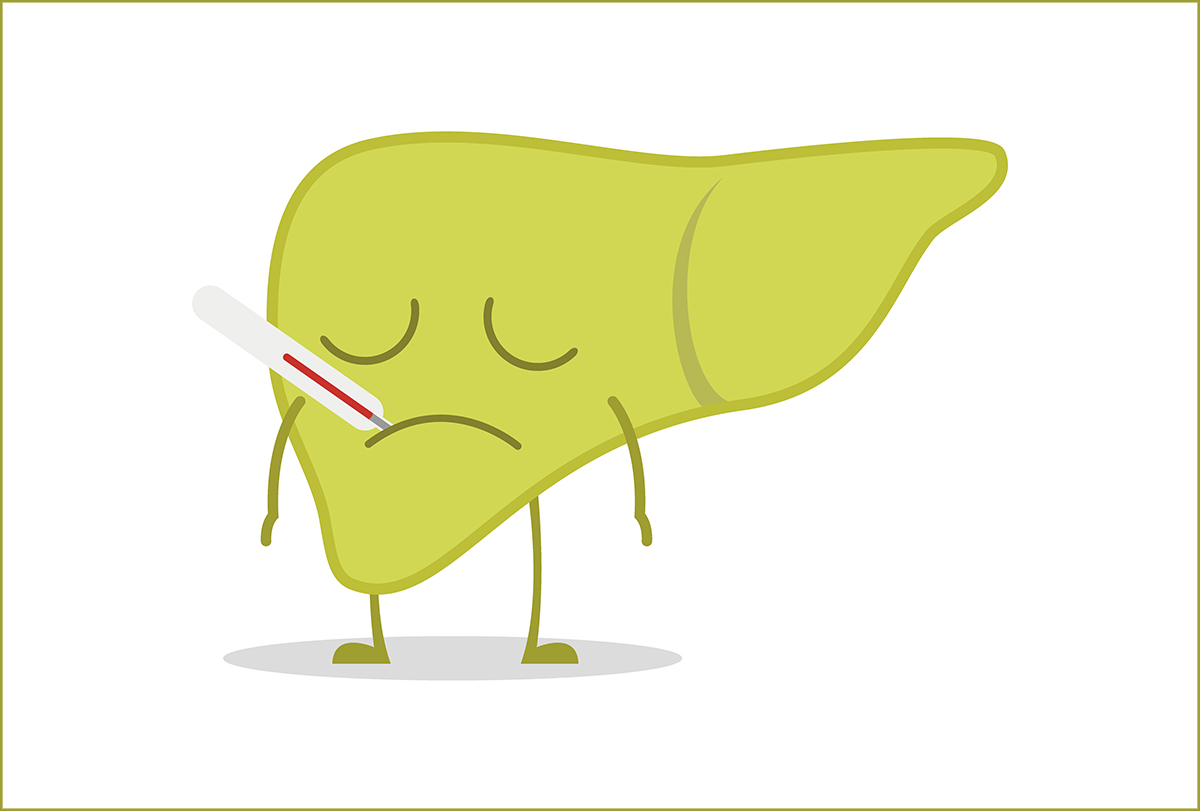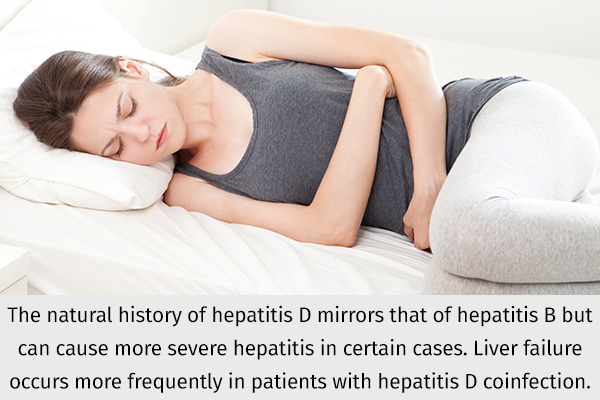In this article:
Hepatitis refers to inflammation of the liver. Hepatitis B and C can lead to chronic liver disease, whereas hepatitis C accounts for a larger proportion of disease in the United States, with approximately 2.4 million adults being infected with hepatitis C compared to 1.59 million infected with hepatitis B.

The incidence of cirrhosis in the affected groups is comparable. The risk of liver cancer is also similar in patients with chronic hepatitis B and C with cirrhosis.
Symptoms of Hepatitis
While some hepatitis patients remain asymptomatic, others generally report experiencing flu-like symptoms along with:
Common Causes of Hepatitis
The following factors can induce and worsen hepatitis:
- Viral infections
- Alcohol abuse
- Drug abuse
- Toxins
- Metabolic disease
- Autoimmune disease
Types of Hepatitis
Hepatitis can be categorized into the following types:
Hepatitis A

Hepatitis A is a virus that is transmitted through the fecal-oral route. Thus, common ways of contracting this type of hepatitis include consuming contaminated food and water or contact with an infected individual.
Consumption of raw or undercooked shellfish, vegetables, or other foods is also a common mode of transmission, as well as consumption of foods handled by infected individuals.
Person-to-person transmission occurs in households and daycare centers and among military personnel, all due to close contact. Blood transfusions and illicit drug use are rare causes of this type of hepatitis. Sexual transmission can also occur.
Infection with the hepatitis A virus does not become chronic. Less than 1% of acute infections lead to liver failure. (1)
Common symptoms include nausea, vomiting, anorexia, fever, malaise, and abdominal pain. Seventy percent of infected adults are symptomatic, whereas the majority of infected children are without symptoms. Hepatitis A infection can be more severe in pregnant women, so particular care should be given to these patients. (2)
Hepatitis A is not associated with an increased risk of liver cancer.
Hepatitis B

Hepatitis B is a virus that is transmitted through contact with contaminated body fluids (primarily blood, less so saliva, semen, and other body fluids).
In most parts of the world, mother-to-child (maternal-fetal) transmission is the most common mode of transmission. Sexual transmission is the next most common mode of transmission, followed by injection drug use. (3) Acupuncture, tattooing, and body piercing are also risk factors for hepatitis B infection depending on the circumstances.
Blood transfusion in the United States is an extremely rare cause of hepatitis B infection, occurring in 1 out of 1 million transfusions, due to the highly effective screening of blood donors. (4) Organ transplantation can be a rare cause of hepatitis B.
It is possible for transmission to occur if an individual is exposed to contaminated blood such as through toothbrushes, razor blades, or toys as the hepatitis B virus can survive for prolonged periods outside of the human body.
The development of chronic hepatitis B following acute infection is dependent on the age at the time of exposure. About 90% of neonates, 20%–50% of children ages 1–5 years, and less than 5% of adults with acute infection develop chronic disease. (5) Also, 0.1%–0.5% of patients with acute hepatitis B infection develop liver failure. (6)
Acute hepatitis B infection (a new infection) is asymptomatic or minimally symptomatic in most patients (70%). About 30% of patients with acute hepatitis B infection develop jaundice. Other symptoms of an acute infection include flu-like symptoms, nausea, anorexia, and right upper quadrant abdominal pain. More unusual symptoms related to the development of immune complexes (antigen-antibody complexes) include fever, joint pain/arthritis, and skin rash.
Up to 50% of patients with acute hepatitis B develop chronic hepatitis B (infection present for 6 months or greater). Most patients are asymptomatic, with the most common symptom being fatigue.
If a patient develops cirrhosis from chronic hepatitis B, the patient can also develop fluid overload, gastrointestinal bleeding, and confusion. Chronic hepatitis B infection is a risk factor for liver cancer, with the risk being higher in patients with cirrhosis (3.2 vs. 0.1 cases per 100 person-years).
Treatment of chronic hepatitis B involves suppression of viral replication; thus, ongoing therapy is typically required. Commonly used medications are available in pill form and are well tolerated.
Hepatitis C

The hepatitis C virus is transmitted via contact with contaminated blood. By far, the most common risk factor for chronic hepatitis C is intravenous drug use, followed by blood transfusions, sex with an injection drug user, incarceration, religious rituals (scarification), being stuck with a bloody object, body piercing, and immunoglobulin injection.
Typically, the diagnosis is made when a provider identifies and tests a high-risk individual. Up to 85% of infections become chronic. It is a rare cause of liver failure, but the likelihood is higher if the patient is coinfected with hepatitis B.
Acute infection with hepatitis C is typically asymptomatic. When symptomatic, patients will experience flu-like symptoms, fatigue, nausea, anorexia, and right upper-quadrant abdominal pain.
Patients with chronic hepatitis C tend to have many symptoms, but it is unclear as to how many of those symptoms are actually due to the hepatitis C infection. The most common symptoms include fatigue and sleep disturbances. Less common symptoms include nausea, diarrhea, abdominal pain, anorexia, myalgia, arthralgia, weakness, and weight loss. Depression and anxiety are also common.
Chronic hepatitis C infection can also be associated with hematologic diseases such as essential mixed cryoglobulinemia, lymphoma, kidney disease (membranoproliferative glomerulonephritis), thyroid disease (thyroiditis), skin disease (porphyria cutanea tarda, lichen planus), and diabetes mellitus.
Chronic hepatitis C with advanced fibrosis or cirrhosis is a risk factor for developing liver cancer (1%–4% per year). (7) Patients with cirrhosis can develop fluid overload, gastrointestinal bleeding, and confusion.
Treatment of hepatitis C with direct-acting antivirals is highly effective and can cure the infection in over 95% of patients. (8) These drugs are well tolerated and available in pill form.
Hepatitis D

The hepatitis D virus (also known as the delta virus or agent) is an incomplete virus and can only cause an infection if hepatitis B is present. A person can become infected with hepatitis D at the same time as hepatitis B (coinfection) or cause a flare of hepatitis in a patient with chronic hepatitis B (superinfection).
The hepatitis D virus cannot survive in the absence of hepatitis B. Thus, the natural history of hepatitis D mirrors that of hepatitis B but can cause more severe hepatitis in certain cases.
Liver failure occurs more frequently in patients with hepatitis D coinfection. Progression to cirrhosis can be more rapid in patients with hepatitis D. Whether or not it accelerates the development of liver cancer is controversial.
The primary risk factor for hepatitis D is injection drug use and coming from areas of high endemicity (Mongolia, Moldova, Western and Middle Africa). Symptoms are similar to those of hepatitis B. Treatment of hepatitis D involves the use of pegylated interferon alfa and treatment of hepatitis B.
Hepatitis E

Hepatitis E is similar to hepatitis A in that it is transmitted through the fecal-oral route. Thus, consumption of contaminated water is a common risk factor worldwide, particularly in certain parts of Asia and Africa.
Other modes of transmission include blood transfusions and mother-to-child transfer. Consumption of pork products, filter feeder shellfish, undercooked deer meat, wild boar meat, pig liver sausage, and internal organs of various animals has been associated with outbreaks. In some countries, cows’ milk has been implicated as a source of infection.
Common symptoms include malaise, nausea, vomiting, anorexia, abdominal pain, fever, and hepatomegaly (enlarged liver). Less common symptoms include diarrhea, joint pain, itching, and rash.
In some rare instances, a variety of other diseases have been associated with hepatitis E infection, including blood disorders (low platelet count, anemia), thyroid disease (thyroiditis), kidney disease (membranous glomerulonephritis), acute pancreatitis, and various neurological diseases.
Unlike hepatitis A, hepatitis E can lead to chronic disease. Acute liver failure (0.5%–4%) can also occur. Hepatitis E infection can be more severe in pregnant women with a mortality rate of as high as 15%–25%. Treatment is only recommended for patients infected with genotype 3 since chronic infection can develop in these patients.
Hepatitis F and G
Hepatitis F and G are not well characterized. Not much has been written about these viruses recently either, so it’s also not a hot topic for research.
What Is the Difference Between Hepatitis A, B, and C?
Hepatitis A is a cause of acute hepatitis only. Hepatitis B and C can cause both acute and chronic hepatitis. The majority of patients who are infected with hepatitis C develop chronic disease. The differences are outlined above.
Final Word
Chronic hepatitis C can be cured if treated with a direct-acting antiviral drug. Chronic hepatitis B can be treated with drugs that suppress viral growth, but in most cases, it is not cured. But the treatment is still of great benefit to the patient as it reduces damage to the liver and can lead to reversal of fibrosis or scarring.
- Was this article helpful?
- YES, THANKS!NOT REALLY


